If data-layer transmits at 1500 byte frames, I want to know how is
upper layer at the receiver able to handle such huge incoming
data-frames.
1500 octets is a reasonable MTU (Maximum Transmission Unit), which is the size of the data-link protocol payload. Remember that not all frames are that size, it is just the maximum size of the frame payload. There are many, many things with much smaller payloads. For example, VoIP has very small payloads, often smaller than the overhead of the various protocols.
Frames and packets get lost or dropped all the time, often on purpose (see RED, Random Early Detection). The larger the data unit, the more data that is lost when a frame or packet is lost, and with reliable protocols, such as TCP, the more data must be resent.
Also, having a reasonable limit on frame or packet size keeps one host from monopolizing the network. Hosts must take turns.
For ex: If internet speed in 100 Mbps, upper layers will have to
process 104857600 bytes/second or 104857600/1500 = 69905
frames/second. Network layer also need to re-assemble these frames.
How network layer is able to handle at such scale.
Your statement has several problems.
First, 100 Mbps is 12,500,000 bytes per second. To calculate the number of frames per second, you must take into account the data-link overhead. For ethernet, you have 7 octet Preabmle, a 1 octet SoF, a 14 octet frame header, the payload (46 to 1500 octets), a four octet CRC, then a 12 octet Inter-Packet Gap. The ethernet overhead is 38 octets, not counting the payload. To now how many frames per second, you would need to know the payload size of each frame, but you seem to wrongly assume every frame payload is the maximum 1500 octets, and that is not true. You get just over 8,000 frames per second for the maximum frame size.
Next, the network layer does not reassemble frame payloads. The payload of the frame is one network-layer packet. The payload of the network packet is the transport-layer data unit (TCP segment, UDP datagram, etc.). The payload of the transport protocol is application data (remember that the OSI model is just a model, and OSes do not implement separate session and presentation layers; only the application layer). The payload of the transport protocol is presented to the application process, and it may be application data or an application-layer protocol, e.g. HTTP.
The bandwidth, 100 Mbps in your example, is how fast a host can serialize the bits onto the wire. That is a function of the NIC hardware and the physical/data-link protocol it uses.
which would mean lots and lots and lots of fragmentation and
re-assembly at the receiver.
Packet fragmentation is basically obsolete. It is still part of IPv4, but fragmentation in the path has been eliminated in IPv6, and smart businesses, do not allow IPv4 packet fragments due to fragmentation attacks. IPv4 packets may be fragmented if the DF bit is not set in the packet header, and the MTU in the path shrinks smaller than the original MTU. For example, a tunnel will have a smaller MTU because of the tunnel overhead. If the DF bit is set, then a packet too large for the MTU on the next link, the packet is dropped. Packet fragmentation is very resource intensive on a router, and there is a set of steps that must be performed to fragment a packet.
You may be confusing IPv4 packet fragmentation and reassembly with TCP segmentation, which is something completely different.
